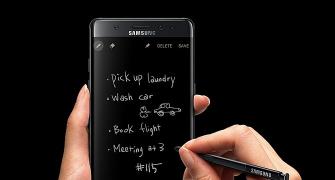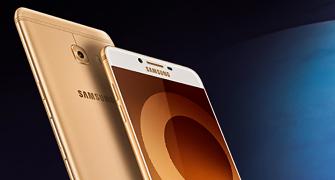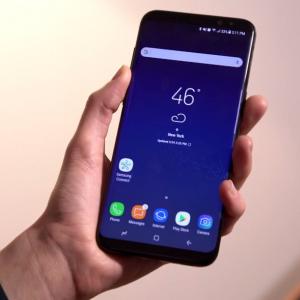Samsung has crafted a remarkable device, something revolutionary to stand out from the crowd, in the form of Galaxy S8, says Himanshu Juneja
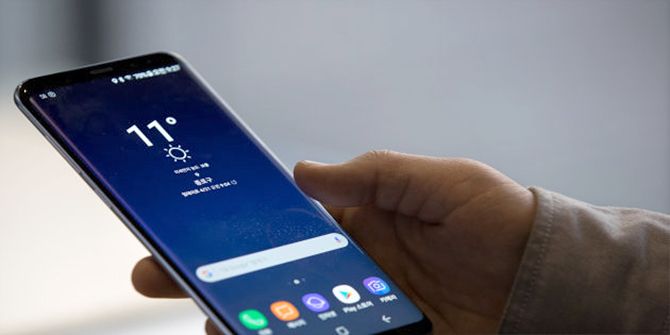
Samsung Galaxy S8 has made its India debut along with its elder sibling, and nobody is surprised that both are being touted as the best handsets of the year 2017 already.
Samsung Galaxy S8 especially is winning slightly more accolades on account of being more pocket-able variant out of the two. The strong sale performance has enabled Samsung to breathe easy, which was reeling from the last year's battery debacle.
Samsung had to not only exonerate the devils of the Note 7 fiasco, they also had to improve upon the much acclaimed Galaxy S7 handsets.
And quite remarkably, Samsung Galaxy S8, looks like the most complete handset to have graced the scene owing to the combination of unique hardware software features.
That is not to say that the handset is without flaws either, it is just that the advantages far outweigh the negatives.
Time to zoom in on the Samsung Galaxy S8 for a detailed look.
Construction
The Galaxy S8 is a stunning piece of hardware. Samsung went with the metal and glass combo, and has come up with something truly beautiful and it stands out.
The curved corners and the curved edges on the S8 meant that Samsung decided to do away with the 'flat' variant entirely, which may irk some prospective buyers. Samsung has decided to call the current screens as 'Infinity Displays'.
The tall handset looks premium with its aluminium frame, and weighs 155 gms. It measures 148.9 x 68.1 x 8 mm dimension wise, making it incredibly thin.
The rear panel is curved, allowing the handset to sit nicely in the hand when held. At the back is where one sees the heart rate monitor and LED module, the camera, and the finger print scanner.
Samsung removing the finger print scanner and its branding from the front panel was definitely news, and it was a good news. The home button would have looked like an eyesore especially with the gorgeous display.
The black coloured variant definitely is the one to go for, as right on the top of the display we have a cluster of 7 sensors, and the dark hue helps in masking them away.
The handset carries a facial recognition system which assists in unlocking the phone quickly, but using it can be a pain as one has to stare at it awkwardly at times, and it can be even foxed by using the owner's photograph!
The fingerprint scanner's odd positioning and shape do not help either in quickly unlocking the handset, as the users have been either fumbling to find it, or mistaking the camera lens for the fingerprint scanner.
The power button is located on the right edge, where as the hybrid dual SIM slot is located on the top. The bottom edge carries the 3.5 mm jack, USB Type C connector, and a single speaker.
The left edge has the volume button, and a button to fire up Samsung's very own smart assistant -- Bixby. The placement of the latter could have been better as it gets in the way a lot while operating the device.
The handset comes across as masterfully crafted and a premium device. But the owners will do well to opt for a case, as the handset is not very good at taking a sudden drop to the floor.
Dropping the Samsung Galaxy S8 can be a very costly affair.
Display
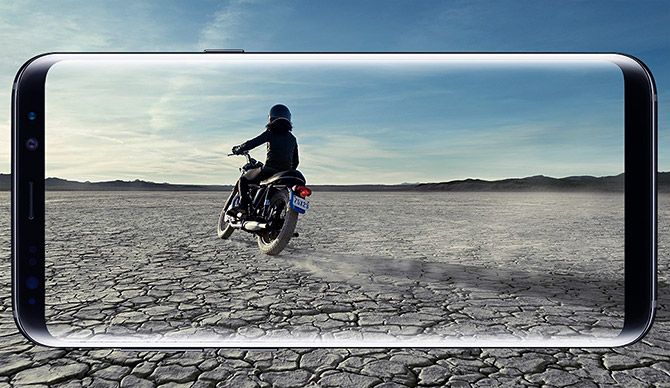
The main attraction of the Galaxy S8 handset is the 5.8-inch worth of 'Infinity Display'. The Super AMOLED panel's 1440 x 2960p resolution means a very impressive 570 ppi pixel density.
The handset gives the impression of being absolutely bezel less, thanks to the dark borders blending with the curved display.
The thing to note is the unusual aspect ratio at play here.
Ditching the traditional 16:9 display, the Galaxy S8's taller frame brings along the newer 18.5:9 aspect ratio. This may well translate to issues due to lack of optimisation of apps, but Google seems to be actively pushing the makers to adapt and changes are already afoot.
The new format definitely brings out the best while watching videos and other similar media forms. Samsung has incorporated the HDR support to make things sweeter.
The screen incorporates onscreen buttons for navigation, as ditching the hardware buttons brings a more immersive experience. The home button location is pressure sensitive, allowing users to wake the device up with a bit more pressure applied, or simply be used to return to the home screen.
Corning Gorilla Glass 5 protection is provided on the bright display, which works as expected even under direct sunlight. Images are sharp and AMOLED saturated.
Users can even choose to run the display on 1080p resolution. Inclusion of a blue light filter looked like a thoughtful addition.
Specifications
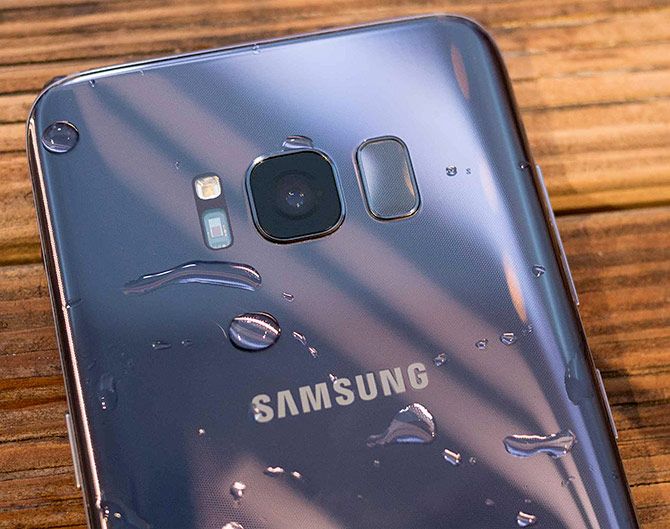
Samsung Galaxy S8 comes with the in house Exynos 8895 SoC. The Octa core CPU comprises of four cores clocked at 2.3 Ghz, while the other four cores operate at 1.7 Ghz speed. Mali-G71 MP20 features as the GPU.
It was good to see Samsung not going overboard with the RAM quantity, as it opted only for 4 GB worth of it. The onboard storage capacity is 64 GB, with the microSD card ready to expand it further by a maximum of 256 GB.
Connectivity
The Indian market sees a dual SIM variant, VoLTE enabled 4G handset. Unfortunately, Samsung has gone with a hybrid slim slot, forcing the consumer to choose between the extra SIM or the microSD card.
The other connectivity options include features like Bluetooth (ver 5), Wi-Fi (802.11ac), and GPS. NFC also makes the cut, and so does Samsung Pay.
Operating system
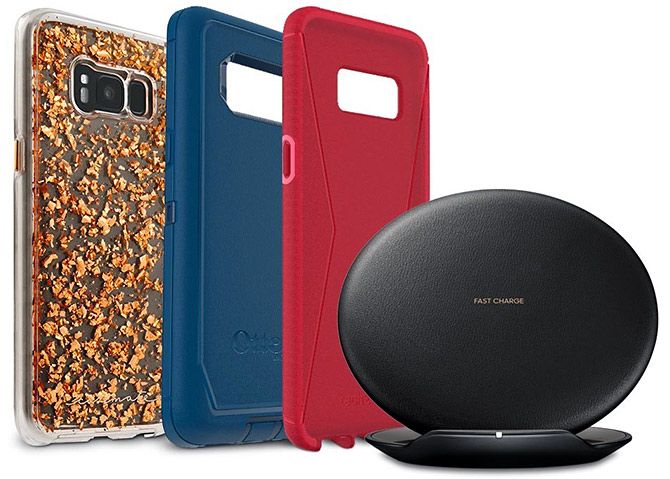
The Galaxy S8 comes running on the Android Nougat (ver 7.0) out of the box, with Samsung's 'Samsung Experience' UI (ver 8.1) slapped on top.
Samsung has spent a considerable effort in polishing its custom interface, and while the results are encouraging, there is still quite a lot to do.
There is no dearth of processing power with the S8, but instances like the lack of smooth scrolling or the usual delay in launching Bixby clearly indicated how Samsung still is not addressing some core issues.
Samsung has also stacked Microsoft's suite and Samsung's own apps, many of which mimic Android's own, and maintained the habit of supplying duplicate and force feeding software to the consumers.
Making matters worse is the fact that these apps can only be disabled. Bixby really should have been avoided, as it has a long way to go before it really can stake a serious claim.
There are some useful features though. Users can use the fingerprint scanner to bring down the notification panel for quick access.
A one handed mode has been included to lend a helping hand in tricky situations. The secure folder should be a popular feature, and same goes for the ability to run secondary instance of an app.
The most useful feature would be the swipe to access the favourite apps, allowing not only a way to quickly launch most used softwares, but also something to avoid too much adjustment of the grip every now and then.
It is overall a satisfying experience, but hopefully, the Android 7.1 update will carry some more cheerful news.
Performance
Top of the line hardware and a relatively better optimised custom UI hinted towards a zippy performance and the real world performance did not disappoint either. Well, nearly.
The handset is really fast, and using it is an absolute joy. Be it HD content or multitasking, split window ways or otherwise, everything was handled without breaking into sweat.
But Samsung still needs to further polish the UI a bit more.
There was the odd stutter while scrolling, especially after having installed the favourite set of apps. There is no excuse for having that anomaly with the sort of hardware the S8 is packing.
The speaker is loud, but doesn't carries fidelity for higher levels. And as mentioned earlier, its placement could have been a bit better.
Maybe Motorola G5 Plus can serve as an inspiration where the earpiece doubles up as a front facing speaker, ensuring uninterrupted experience.
The headphones accompanying the phone carry AKG branding, but they are only tuned by AKG. The performance was pretty decent.
Camera
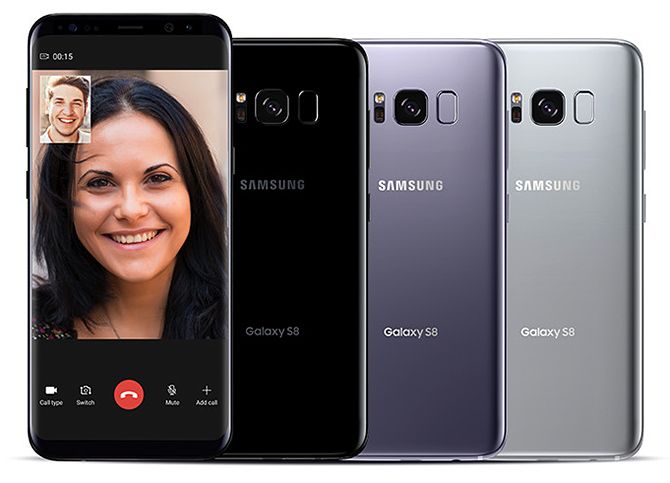
The rear camera unit is a 12MP affair, complete with its LED flash, Optical Image Stabilisation, and phase detection autofocus. The front facing camera gets a big upgrade from last year, and it is now an 8MP unit.
Samsung has gone with a 'side-grade' than a proper upgrade with Galaxy S8's camera.
Last year's Galaxy S7 were class leading products when it came to camera performance especially, and the S8 sees better image processing mechanism.
The f/1.7 aperture means low light photography is again the one to beat this year. As per Samsung, multiple shots are combined to deliver that perfect final result.
Image sensor coming with its own memory helps get the job done fantastically well.
The focusing was quick, and captured results were excellent. The images come out with details and accurate colours.
The night time photography too yielded impressive results -- less noise, and good details. The auto mode is pretty good for the job, and pro mode maybe summoned only rarely. We do get the option to store results as RAW image files.
If one had to nitpick, the view of field could have been better though. The app is pretty good, and fires up instantly. A user can double press the power button to quickly activate the app.
There are a lot of snapchat-esque masks included as options. The zooming in and out via the shutter button is a handy feature to have.
The video results came out similar to those with the still photography. Be it the 4K videos, or the 1080p ones, there is very little to complain about as they showed up with rich details and good colour reproduction.
The 1080p mode is more preferred due to HDR availability and a steadier focusing job.
For more enthusiasts, there is the option to grab some slow motion videos too, which again were very clear. The front facing camera is not a slouch, and the selfies are more than social media share worthy.
Battery
Samsung has decided to carry over the 3000 mAh battery pack from the Galaxy S7, and the speculations of a reduced backup started to do the rounds. Thankfully, the 10 nm fabricated SoC ensured that the difference was not monumental.
The handset will last an entire day on a regular to heavy usage pattern, while the Quick Charge 2.0 means the battery will be juiced up fully in under two hours. Still, it would have been better to have a bit more beefier battery.
Verdict
Samsung has crafted a remarkable device in the form of Galaxy S8. It needed a special effort to put behind the woes from last year, and then there was the need to come up with something revolutionary to stand out from the crowd.
A handset with newer aspect ratio, curved display, a polished set of cameras, a decent battery, the list can still go on further.
But the handset is not without its set of shortcomings. There are no dual speakers onboard, and the single speaker's placement can be source of frustration.
Software still needs a few fixes, while Bixby pales in front of Google's assistant. The finger print scanner placement is a big disappointment too.
Samsung Galaxy S8 comes with a price tag of a whopping Rs 57,900.
Owners of the Galaxy S7 need not upgrade, but others will definitely be tempted by the more futuristic infinity display toting S8. For those not enamoured by it, there is always the LG G6 which comes with a traditional display and with its fantastic dual camera and DAC advantage.

